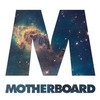How Art Works Online
Advertisement
Work and Audience
How to Get a Job
Advertisement
David Choe
Advertisement
Social media
Unknowns
Advertisement
New Tensions
But Bishop's real concern is contemporary art, what is exhibited to the mainstream in the largest, most well-known, and most visible institutions. Contemporary art could use more contributions that reflect on the human condition in the Digital Age. Plus, you’ve got to give it to her for seeing the drought and asking for more of it. And the fact that she pissed a lot of people off by critiquing what passes for digital art in the mainstream might lend some weight to her argument. That people have a strong response to the question of if and how we are processing what it means to think, see, and filter our new reality indicates that we are in that emergent historical space where we are still figuring it all out.For now the promise of sharing and connecting on the Internet is represented by crowdsourcing. But could art empower a network to make political change with effects on the ground?
Advertisement
Social Art
Advertisement
Influence and Understanding
Advertisement
Advertisement
Commerce
Advertisement
